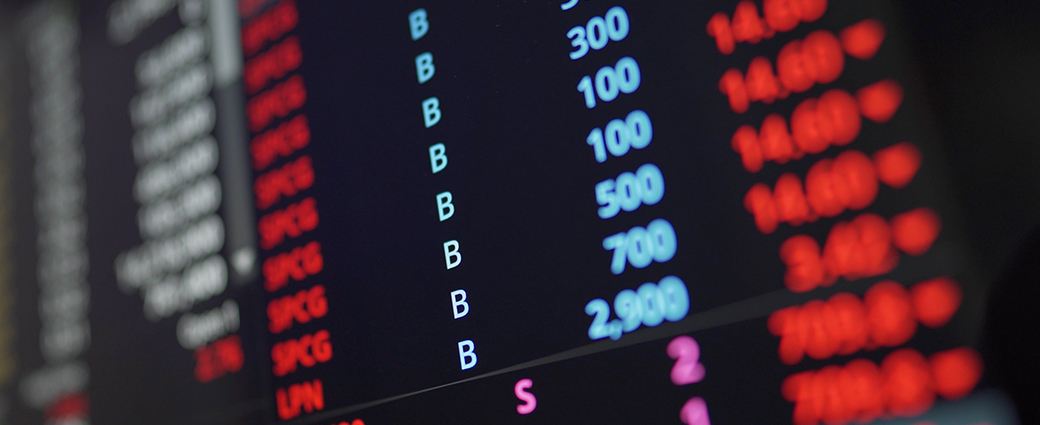Under pressure: Three-minute macro
This month, we note that the equity risk premium isn’t indicating a growth slowdown in the near future (despite our views to the contrary), while also cautioning that fewer people may be heading back to the office than we suspect many are hoping for. Finally, we look at how the Federal Reserves aggressive policy trajectory might affect Asia.

Equity risk premium is still not pricing a growth slowdown
Price-to-earnings (P/E) multiples have contracted year to date as a result of weak price performance, yet earnings revisions have continued to move upward. While these positive earnings revisions don’t appear to corroborate the cautious qualitative forward guidance given by corporate issuers, the earnings yield on the S&P 500 Index has continued to rise. And with the forward P/E of the index retreating from 22.0x at its 2022 peak to 15.9x as of this writing, it’s easy to say that valuations have substantially cheapened—but we caution on getting too excited.
A look at the equity risk premium (the S&P 500 Index earnings yield less the U.S. 10-year U.S. Treasury) shows us that it’s clocking in at 3.18% and is still low. While market participants are busy trying to find the bottom in equities, we aren’t confident that the equity risk premium is fully compensating investors for the growth slowdown that we think the United States will experience this year; in fact, the earnings yield is likely to decline if earnings are revised downward. This last scenario is likely to be the case as profit margins erode, the U.S. Federal Reserve (Fed) tightens, and demand moderates. We have to ask ourselves: Is an earnings yield roughly below where it’s been over the past decade really compensating equity risk given the macro outlook over the next 6 to 18 months?
Equity risk premium doesn't see a slowdown
S&P 500 Index P/E, yield and risk premium
The neutral rate of work from home
While work from home continues to dominate discussions in the workplace, we’ve continued to ask ourselves what the neutral rate of work from home in the postpandemic new normal is.
It’s estimated that only 50% of all U.S. workers hold jobs that actually allow them to work remotely. That makes about 66 million remote-capable workers, accounting for about 20% of the U.S. population.
Once we isolate the number of remote-capable workers, we look to a recent Gallup survey that followed 140,000 respondents through the pandemic to obtain insight into their working arrangements. The survey asked remote-capable respondents where they were working before the pandemic and where they anticipated working in 2022 and beyond. Comparing pre- and postpandemic results, exclusively remote work increased from 8% to 24%, hybrid was up from 32% to 53%, and fully on-site workers fell from 60% to 23%.
If you assume that the new class of hybrid worker commutes an average of 2.5 days per week, we could see a 35% reduction in total office visits on an annual basis for remote-capable workers compared with 2019. This means 35% fewer people commuting during rush hour, fewer people supporting businesses near the workplace, and a reduction in the consumption of goods and services essential for an in-office lifestyle. How working arrangements evolve will also affect where people live, as well as interstate migration and corporate travel. Furthermore, this data would suggest that approximately 15% of remote-capable workers that were working exclusively remote in 2022 will trend to their neutral rates of hybrid or on-site arrangements. But for those still waiting on more juice in the reopening trade, we caution that this represents only about 10 million people, less than 3% of Americans.
The future of work from home
Current and anticipated employee work locations for remote-capable jobs
How does a more aggressive Fed narrative transmit to Asia?
The Fed delivered the biggest one-time increase to the Fed funds rate in 28 years on June 15, raising the policy rate by 75 basis points. It also signaled a more aggressive policy trajectory, resulting in significant tightening in global liquidity conditions, leaving global central banks scrambling. In Asia, this new narrative for the Fed is creating considerable pressure for central banks to accelerate their own tightening.
Broadly speaking, the downdraft of higher rates and the delayed peak inflation narrative will weigh on consumption and investment growth at a time when Asia’s recovery from the pandemic is still incomplete, and financial stability risks are increasing. The longer the disruption from higher rates and tighter liquidity goes on, the greater the risk of demand and supply shocks morphing into a liquidity/funding shock, further denting economic growth through a domestic credit or external funding stock. When an economy has built up significant domestic debt liabilities, slowing economic growth can hurt corporate earnings and their ability to service debt. In turn, this can lead to unemployment, reducing the ability of households to service their consumer and mortgage debt.
A sudden external funding squeeze is another potential liquidity risk for Asia. Balance of payment funding pressure can intensify when the U.S. dollar is too strong and when there are large capital outflows. Risk aversion can also result in tighter credit conditions when trying to raise external funding or roll over existing foreign currency liabilities.
By calculating Z-scores for each of these variables, we find that Hong Kong, China and South Korea are most exposed to domestic credit risk from slowing economic growth, while Hong Kong, Australia and Singapore are most vulnerable to external funding risks. The relative bright spots are Taiwan, Japan, Indonesia, Philippines and Malaysia.
Liquidity risk profiles: Z scores across Asia
The higher the score, the worse the position
Important disclosures
Important disclosures
Investing involves risks, including the potential loss of principal. Financial markets are volatile and can fluctuate significantly in response to company, industry, political, regulatory, market, or economic developments. The information provided does not take into account the suitability, investment objectives, financial situation, or particular needs of any specific person.
All overviews and commentary are intended to be general in nature and for current interest. While helpful, these overviews are no substitute for professional tax, investment, or legal advice. Clients and prospects should seek professional advice for their particular situation. Neither Manulife Investment Management, nor any of our affiliates or representatives (collectively Manulife Investment Management) is providing tax, investment, or legal advice.
This material is intended for the exclusive use of recipients in jurisdictions who are allowed to receive the material under their applicable law. The opinions expressed are those of the author(s) and are subject to change without notice. Our investment teams may hold different views and make different investment decisions. These opinions may not necessarily reflect the views of Manulife Investment Management. The information and/or analysis contained in this material has been compiled or arrived at from sources believed to be reliable, but Manulife Investment Management does not make any representation as to their accuracy, correctness, usefulness, or completeness and does not accept liability for any loss arising from the use of the information and/or analysis contained. The information in this material may contain projections or other forward-looking statements regarding future events, targets, management discipline, or other expectations, and is only current as of the date indicated. The information in this document, including statements concerning financial market trends, are based on current market conditions, which will fluctuate and may be superseded by subsequent market events or for other reasons. Manulife Investment Management disclaims any responsibility to update such information.
Manulife Investment Management shall not assume any liability or responsibility for any direct or indirect loss or damage or any other consequence of any person acting or not acting in reliance on the information contained here. This material was prepared solely for informational purposes, does not constitute a recommendation, professional advice, an offer or an invitation by or on behalf of Manulife Investment Management to any person to buy or sell any security or adopt any investment approach, and is no indication of trading intent in any fund or account managed by Manulife Investment Management. No investment strategy or risk management technique can guarantee returns or eliminate risk in any market environment. Diversification or asset allocation does not guarantee a profit or protect against the risk of loss in any market. Unless otherwise specified, all data is sourced from Manulife Investment Management. Past performance does not guarantee future results.
A widespread health crisis such as a global pandemic could cause substantial market volatility, exchange-trading suspensions and closures, and affect portfolio performance. For example, the novel coronavirus disease (COVID-19) has resulted in significant disruptions to global business activity. The impact of a health crisis and other epidemics and pandemics that may arise in the future could affect the global economy in ways that cannot necessarily be foreseen at the present time. A health crisis may exacerbate other preexisting political, social, and economic risks. Any such impact could adversely affect the portfolio’s performance, resulting in losses to your investment.
This material has not been reviewed by, is not registered with any securities or other regulatory authority, and may, where appropriate, be distributed by Manulife Investment Management and its subsidiaries and affiliates, which includes the John Hancock Investment Management brand.
Manulife, Manulife Investment Management, Stylized M Design, and Manulife Investment Management & Stylized M Design are trademarks of The Manufacturers Life Insurance Company and are used by it, and by its affiliates under license.
2273337
